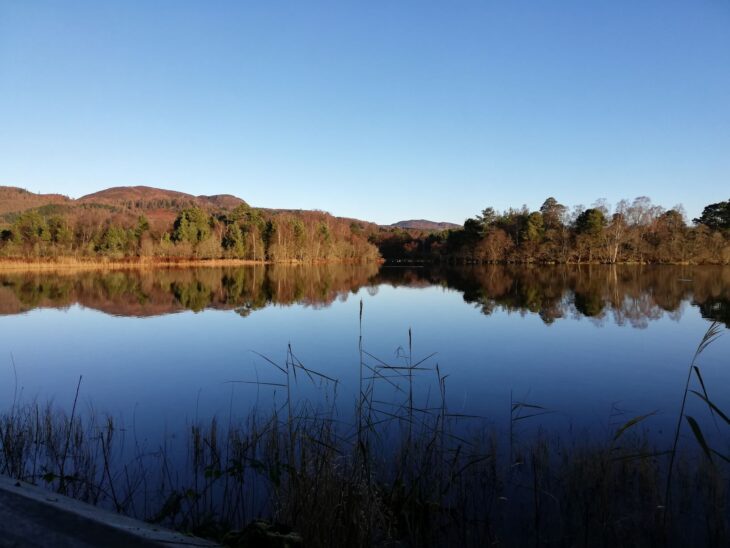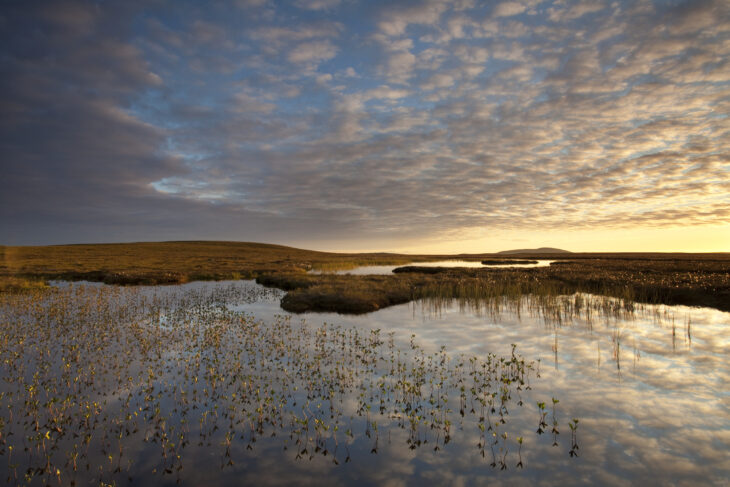Place-based natural solutions: linking climate breakdown, nature, and people

This article first appeared in The Geographer, Spring 2020.
That we are witnessing climate breakdown is undeniable, but worse is set to come without radically decarbonising our economy and reimagining how it works, and for whom. Extreme weather events are increasing in severity, duration, and frequency, while breaking heat records has become the norm. Whilst this affects us all, the impacts are not equally distributed: they hit hardest in areas least responsible. As well as the cost to people and their livelihoods, nature is deeply impacted by climate change, and compounded by rising levels of plastic and other pollutions.
The nature and climate crises aren’t the same, but they are deeply interlinked. Scientists and conservationists have shown that natural and semi-natural ecosystems are likely to be the ‘best starting place for immediate adaptation and mitigation solutions’. The United Nation’s Convention on Biological Diversity’s technical group has pointed out restoring nature could provide 37% of the global mitigation necessary this decade to meet the Paris Agreement. It’s set to be raised in global talks that Scotland will host in April and November.
But we need to be clear: natural climate solutions are not a panacea. They are essential but not sufficient – ending our reliance on fossil fuels through a Just Transition is more important than ever. Nature-based solutions must not justify new emissions when we know that both nature restoration and decarbonising are necessary to prevent climate breakdown. We can’t trade one for the other.
“A greater sense of stewardship and shared ownership of the local and global environment is part of the solution”
Healthy ecosystems emit and sequester greenhouse gas emissions as part of a natural flux, but the long-term, intensive degradation of nature disrupts this. Scotland’s peatlands, for instance, store around 140 years’ worth of Scotland’s annual territorial emissions. But with around 80% degraded they are emitting more than they are sequestering. Restoration is happening, but not at the scale necessary – emissions from peatlands in Scotland have barely changed in 20 years.
The Scottish public must have a say, too. In the Big Climate Conversation, the thousands of participants rated large-scale reforestation as one of the most common high-priority actions, saying: “the Scottish Government should incentivise and encourage large landowners to reforest land with native species, ensuring this is permanent reforestation, not tree planting for the purpose of harvesting timber”. And there’s good reason.
Woodlands and trees store carbon while contributing to rejuvenating soils, which in turn help alleviate flooding. In cities, over rivers, and throughout the landscape, their shade mitigates temperature increases while greater connectedness lets species move more freely, building their resilience against ecosystem change.
Access to woodlands, and nature more generally, can contribute to wellbeing and other health and recreational benefits, climate change mitigation, air pollution mitigation, adaptation, resilience, and biodiversity. It’s true that some of the benefits of woodlands will only be realised in decades to come – but that means acting now to provide these benefits later. The Climate Emergency means decarbonising as soon as possible, and nature regeneration does provide short-term mitigation benefit, but it can’t be the only timeline we work on or we risk thinking only in the short term. We can leave future generations more than the absence of climate catastrophe – we can also leave a replenished nature. This is central to the Scottish Wildlife Trust’s work, and we’ve made the case for protecting and restoring marine, peatland, woodland, and urban ecosystems as part of tackling climate and nature breakdown.

That means greater access to nature and people-led urban transformations, which have been shown to enable positive behavioural change, including for the environment, health, and wellbeing. A greater sense of stewardship and shared ownership of the local and global environment is itself part of the solution.
Natural solutions make growing cities better places to live for people and wildlife. For instance, one study has shown that UK urban forest can store as much carbon as tropical rainforest. Another 20-year study showed the heat-island effect, set to worsen with climate change, was absent in urban areas with more extensive green roof coverage. Increasing the quantity, quality, and connection of green spaces, from trees to urban farms, will help provide green corridors for people and wildlife, as well as aesthetic, health, and social benefits. Particular attention should be paid in those areas with historically lower rates of green infrastructure investment to help resolve inequalities in access to nature and inequalities in health.
Whilst ambitious, the approach is people-centred and evidence-based. Natural solutions aren’t a technology we have to hope for, and they do much more than store carbon. An approach involving local stakeholders, including residents and communities, is essential for ensuring that it is inclusive, deliberative, and imaginative, that it’s an expression of local action, and that we maximise the wide benefits that come from restoring nature.
Scott Leatham
Policy Specialist
Help protect Scotland’s wildlife
Our work to save Scotland’s wildlife is made possible thanks to the generosity of our members and supporters.
Join today from just £3 a month to help protect the species you love.
Preface
This article first appeared in The Geographer, Spring 2020. That we are witnessing climate breakdown is undeniable, but worse is set to come without radically decarbonising our economy and reimagining …
